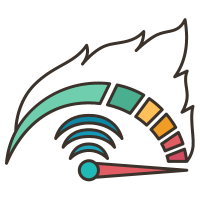Optimizing software delivery with DORA metrics
In software development, delivering high-quality products efficiently is essential. The DORA framework provides metrics designed to help teams evaluate and improve their delivery practices. Developed by DevOps Research and Assessments, these metrics offer clear insights into key performance areas. Using the DORA framework can help your team identify weaknesses, optimize workflows, and achieve better results in your software projects. Let's explore what these metrics are and how they can help your team deliver better software, faster.
Key metrics of the DORA framework
The DORA framework consists of four key metrics that provide a comprehensive view of your team's software delivery performance:
Deployment Frequency: this metric measures how often your team deploys code to production. Frequent deployments are a sign of an efficient development process and quick response to user needs.
Lead Time for Changes: this measures the time it takes from code commit to production deployment. A shorter lead time indicates a more streamlined and effective development pipeline.
Mean Time to Restore (MTTR): MTTR measures the average time it takes to restore service after an incident. This metric is crucial for understanding how quickly your team can recover from disruptions and maintain service reliability.
Change Failure Rate: this metric tracks the percentage of changes that result in a failure in production. A lower change failure rate signifies higher quality and stability in your software releases.
Interpreting Deployment Frequency
Understanding Deployment Frequency can offer valuable insights into your development process. A low Deployment Frequency often reveals inefficiencies in the process, such as insufficient staffing or a poorly structured team. These issues can slow down the delivery of software and hinder your ability to respond to user needs.
Conversely, a high Deployment Frequency indicates that the team is adept at handling changes and delivering value to users quickly. It also reflects a high level of agility and maturity within the team. The goal should be to maintain or increase Deployment Frequency over time. A decline might suggest that there are bottlenecks or other issues in the process that need to be addressed. Striving for smaller, more frequent deployments can help ensure that the process remains efficient and responsive.
Improving software delivery with DORA
To leverage the DORA framework effectively, teams should focus on a few key practices:
Continuous Integration and Continuous Delivery (CI/CD): implementing CI/CD practices helps teams automate the development and deployment process, making it easier to achieve frequent and reliable releases.
Automated Testing and Code Reviews: automating tests and reviews ensures that code changes are thoroughly vetted before reaching production, reducing the likelihood of failures.
Small, Incremental Changes: working with smaller, independent code changes simplifies testing and deployment, making it easier to identify and fix issues quickly.
Reducing Technical Debt: keeping technical debt low ensures that the codebase remains maintainable and scalable, facilitating smoother deployments and faster recovery from incidents.
Conclusion
The DORA framework offers valuable insights into your software delivery performance, helping you identify areas for improvement and drive continuous progress. By focusing on key metrics like Deployment Frequency, Lead Time for Changes, MTTR, and Change Failure Rate, your team can deliver better software, faster, and with greater reliability. Embracing these practices can lead to more efficient processes, higher-quality releases, and ultimately, more satisfied users.



0 Comments